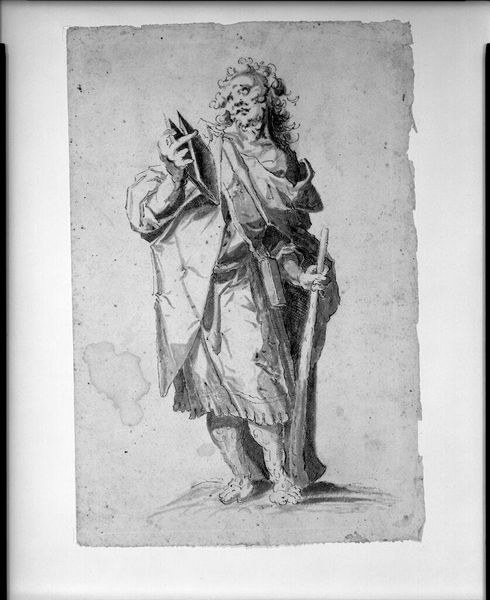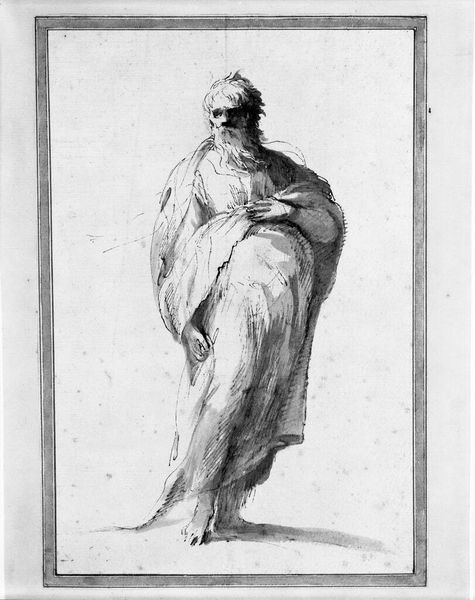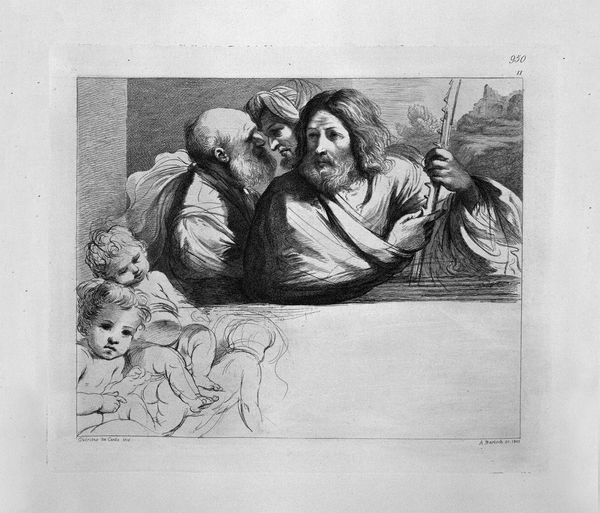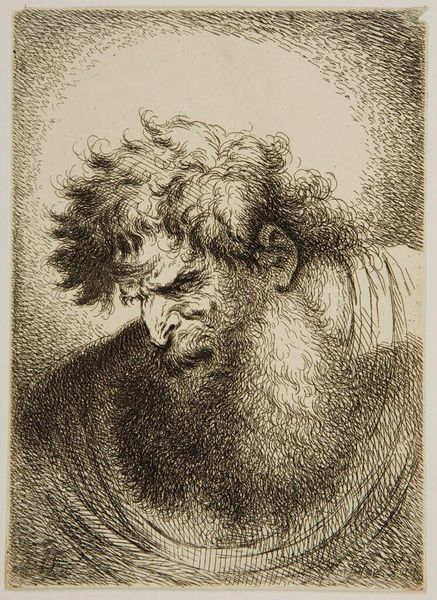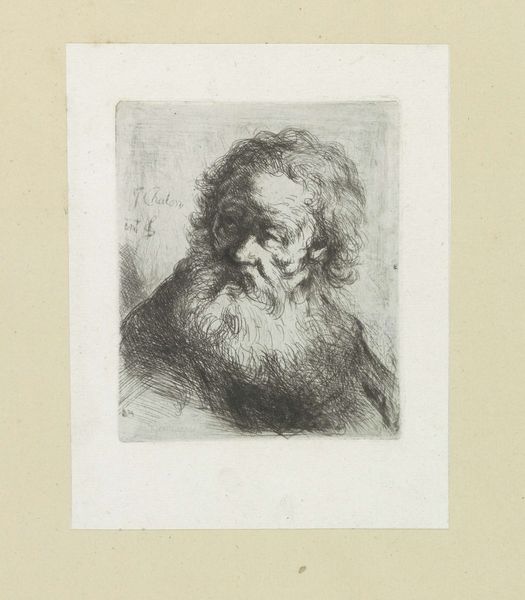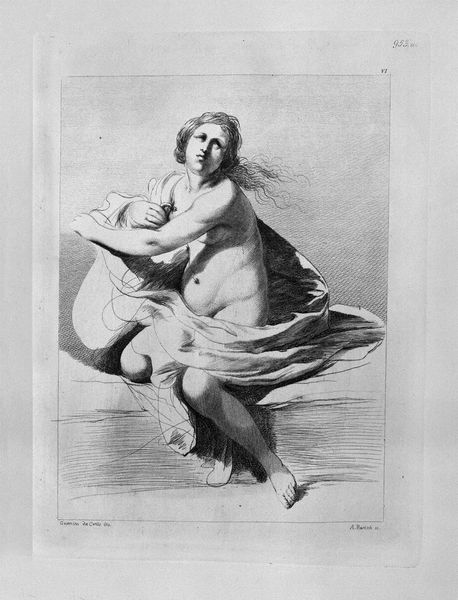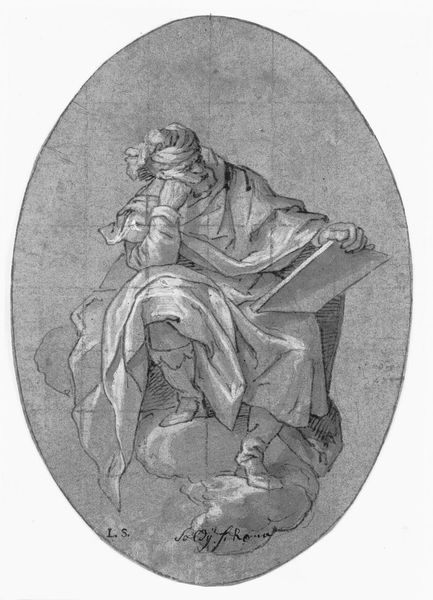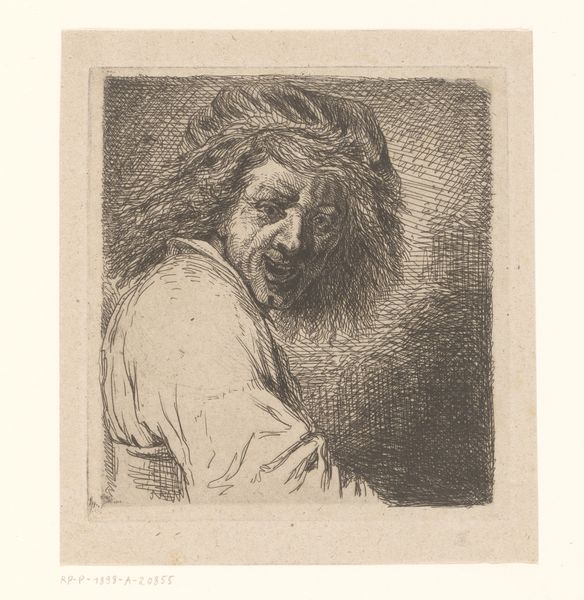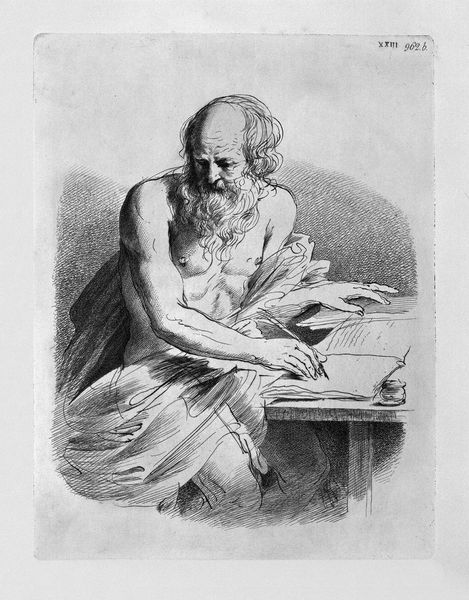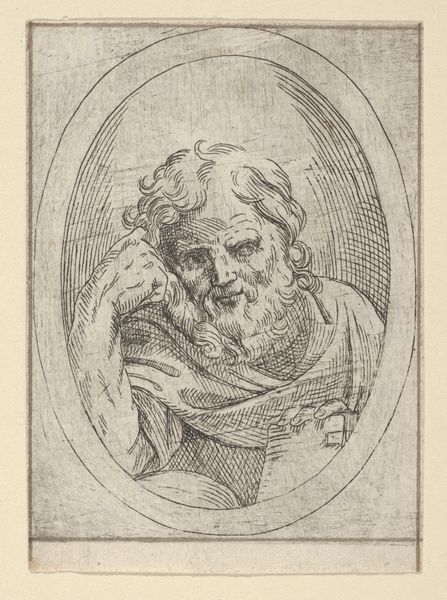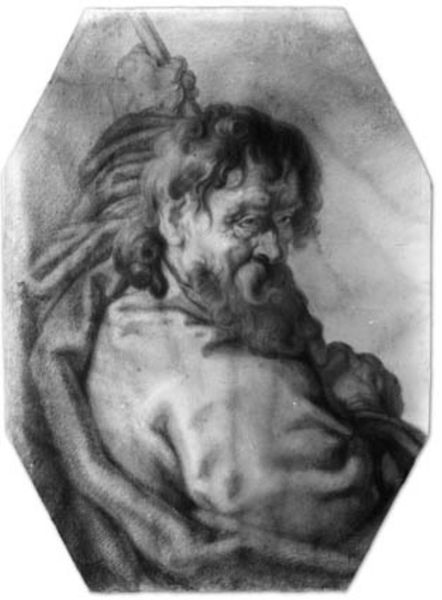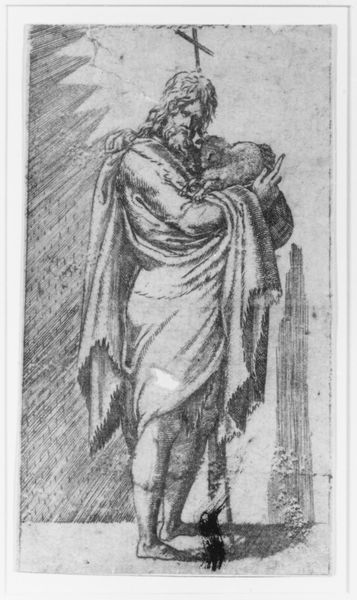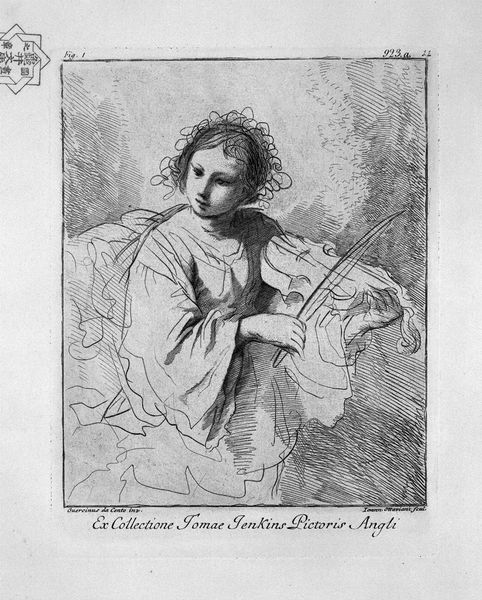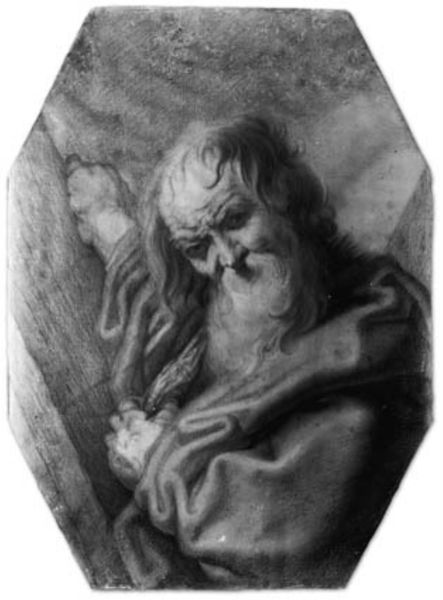
engraving
#
portrait
#
baroque
#
figuration
#
chiaroscuro
#
line
#
history-painting
#
engraving
Copyright: Public domain
Curator: This is an engraving of "God the Father with the Globe in his Hands," based on a work by Guercino. It is part of a larger suite engraved by Giovanni Battista Piranesi. Editor: It has an unfinished feel somehow. Those lines are so lively; I imagine the artist sketching rapidly. Curator: The "unfinished feel" may speak to its method of production: Piranesi often employed assistants in his workshop to complete etchings based on his designs. Each line would require time and deliberate work using acid. So what we see here might highlight how the production of artwork requires the work of many hands and long days. Editor: I see. There is a kind of rugged tenderness, despite the monumental subject, no? He looks rather burdened with his globe. Almost like he's thinking: 'Oh, blast, what shall I do with this lot?' Curator: Indeed, engravings like this were crucial in disseminating visual ideas to a broader public. This method makes previously exclusive paintings by artists like Guercino accessible to print buyers. By the act of reproduction, religious subjects can be placed in different social contexts as people bring the images into their own homes or places of worship. Editor: It does provoke a lot of feelings, though, to see a great bearded figure looking slightly glum. There is something very appealing about it. Also, note the use of crosshatching here to depict shade on his divine, well-worn robe. A bit austere and economical if you think about the kind of effect Guercino can create with oils, yet affecting. Curator: These visual shorthands are born of particular media and labor requirements. It's easy to forget that an image that feels spiritually immediate now went through very hands-on material procedures to emerge, with many decisions about who, how, and what purpose would it serve at the fore. Editor: So much to reflect upon just in an old reproduction. Still, I would hang that on my wall happily! The raw honesty speaks to something very immediate despite it coming down to us over the centuries. Curator: Yes, an object rooted both in commerce and piety; mass consumption and reflection, all at once. A true artifact.
Comments
No comments
Be the first to comment and join the conversation on the ultimate creative platform.
